|
|

Posts: 7091
Location: Northwest Chicago Burbs | Big lakes = big fish (ON AVERAGE)
Big fish come from lakes that have a large amount of forage.
Spearing kills fish, prevents them from becoming big fish.
Low size limits + spearing = more dead fish, that dont get to reach their greatest growth potential.
People in Northern Wisconsin dont talk about their trophy catches as much as many of the anglers in MN. do.
Low size limits + spearing + smaller waters - forage - hype about large fish= alot of the NAME lakes in Wisconsin arent producing the large fish that the NAME lakes in Minnesota are.
Notice I took the genetics part out of it.
Edited by Slamr 5/3/2005 1:12 PM
| |
| | |
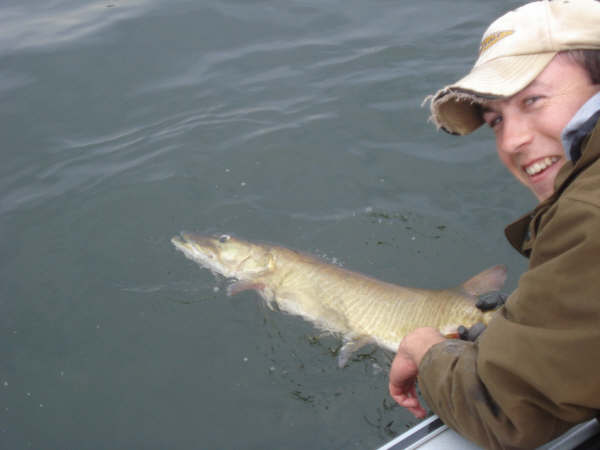
Posts: 199
Location: Anchorage | Slamr, that's on the money. If every area/state were able to grow muskies as big as the Minnesota fish recently, shouldn't folks in Iowa, Indiana, Illinois, Ohio..... be complaining as well? Also, things of this nature are cyclical like everything else. Minnesota hayday is now and will fade at some point.
I believe the biggest difference is the number big fish that are publicized versus caught. Hardcore Wisconsin sticks tend to be a bit more old school keep the talk to a minimum. If more people (WMRT) would sit down and have a good conversation with some quality, honest Northern Wisconsin guides, I garauntee they'd be set back by how many HUGE fish they catch and simply go unreported.
Elwood Brehmer
Edited by woody 5/4/2005 12:50 PM
| |
| | |
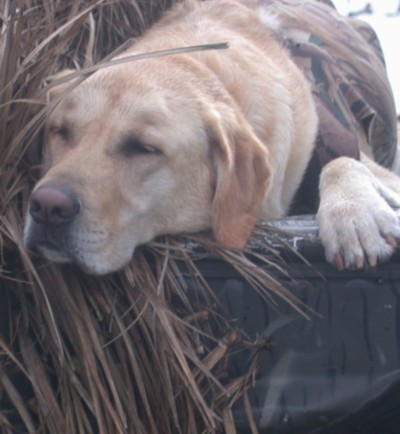
Posts: 1438
| It all goes back to lake size. I am way more willing to say I caught a 53" fish on 40,000 acre Mille Lacs than I am to say I caught a 53" on a 96 acre Wisconsin Pond.
But, ask Larry...lake size has nothing to do with it. It's all a conspiracy started by the DNR way back in 1859.
I'll just keep fishing my small lakes here in Wisconsin and just keep not reporting anything. Shhhhh there's no big muskies in Wisconsin.
Scott
| |
| | |

Location: Munster, IN | Slamr you hit the nail on the head.
Something to add the mix: 3 lines per angler motor trolling on lakes with 50" limits (LCO, Grindstone, etc)
Single hook sucker rigs are still being used by many of the old timers plus some of the ignorant (or selfish) young bucks too.
The big females hardly stand a chance of survival if they get caught.
I forgot to meniton lake shore development that has destroyed the spawing areas too.
 | |
| | |
| Slamr, do you have any data that shows that a higher % of muskie anglers from MN talk about and report big fish than in WI, or is this just a guess. Remember that WI has more than twice as many M.I. members than MN has. I will at least attempt to get some data on this before making any conclusions like this.
Consider this:
Big fish can and currently do come from small lakes with limited forage and forage types and with a 40" size limit. Just look to the west or the data that is available from there.
LCO = big lake + lots of forage + lots of the "right" forage for big fish + a 50 inch size limit + no over-population problems + history of record class fish + our current WI stocked fish = very few big fish. Does this mean that spearing alone accounts for this situation? | |
| | |

Posts: 7091
Location: Northwest Chicago Burbs | Here's a question right back at you EJ: how many MI members are there? How many muskie fisherman are there in Wisconsin? How many MI members fish in Wisconsin? There are a little over 7000 muskies inc. members, there are 14K+ subscribers to Musky Hunter, and MuskieFIRST sees more than 20,000 log-ins from unique IPs. My point here is that though Muskies Inc. is a great organization, and has done great things for muskies overall, the 'lunge log can NOT BE USED FOR DATA! | |
| | |

Posts: 7091
Location: Northwest Chicago Burbs | What is a 'small lake' in MN? 3,000 acres? A small muskie lake in WI is 250 acres? And you think that this little lake should put out the same number of trophies as a small MN lake?
Have you EVER considered, even CONSIDERED that maybe you're comparing apples to oranges?
| |
| | |
Posts: 720
| Hi,
Andrew, Andrew, Andrew you dare to challenge the thinking of the WRMP. Whats the matter with you.  I think your right on the money with regards to the use of MI Lunge log. That data is at best is marginal. I fish a lake outside of Ladysmith Wis. and I also know it is part of the Lunge Log and while the DNR has stock fish there the log only shows a few fish from the low to mid 30's up to the mid 40's . What the log does'nt show is any of the 50" plus fish that have been caught some have even been published in Musky Hunters. People don't want the word to get out on there local lakes because of one reason or another. My point is the Lunge Log does'nt accurately represent a lakes product of Trophy fish. Simply because people are going to be tight lipped. I think your right on the money with regards to the use of MI Lunge log. That data is at best is marginal. I fish a lake outside of Ladysmith Wis. and I also know it is part of the Lunge Log and while the DNR has stock fish there the log only shows a few fish from the low to mid 30's up to the mid 40's . What the log does'nt show is any of the 50" plus fish that have been caught some have even been published in Musky Hunters. People don't want the word to get out on there local lakes because of one reason or another. My point is the Lunge Log does'nt accurately represent a lakes product of Trophy fish. Simply because people are going to be tight lipped.
Thanks
Dave | |
| | |
| Yes I have considered this and it still doesn't add up. Yes, spearing is still an important issue. Harvest is still an important issue. Size limits are an issue. But to think that these are the main causes for the size of our fish in Wisconsin just seems insane to me. No matter how much fishing pressure there is, there will still be SOME fish to get by. Too think that a lake like the size of the Chippewa Flowage, Couderay, Grindstone, and so on are wiped out because of all these pressures just doesn't make sense. Think back 25+ years ago and it was almost a 100% harvest of muskies 30" or bigger and spearing was still very prevelant. Now we are saying that even with all the catch and release and stockings, that is why we are not getting big fish. I don't think so. If pressure and harvest are an issue for fish not getting bigger, how do fish in HEAVILY pressured lakes like the Fox Chain, Shabbona, Pewaukee, Independence, Minnetonka, and Webster get to the size they do? They get by.
Throughout the history books, whether you believe them or not, Wisconsin has produced some mammoth muskies. What lakes did they come from? They weren't always the biggest lakes. There are also lakes on that list that do not have the supposed "quality " food base.
Yes, it seems logical that the bigger the lake the bigger the fish. But why should musky fishermen in Wisconsin accept that the lakes in the state cannot produce really big muskies again?
I am just an individual that has had the opportunity to spend quite a bit of my time fishing with my family and friends in Wisconsin. I am not the oldest and wisest fisherman, but I do see what is going on and so do others. That is why I believe that the gentlemen from the WMRP are doing what they are doing. | |
| | |
| Hey, didn't I read that the Vilas County Musky Marathon had like 17 over 50 alone, and MI had something like less than 10 for the whole state? And that the lake that was stocked with the Leech Lake fish in WI has NEVER had a 50 registered from in in MI? And that hours fished for muskies in Wisocnsin has risen steadily?
Mebbe the kill rigs, the winter spearing and regular spring spearing, and the annual tourist take hurts the Sawyer Co. fish more than anyone wants to admit. | |
| | |
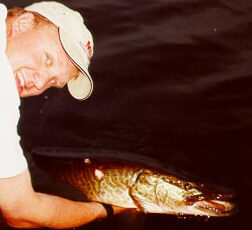
Posts: 714
Location: Rhinelander, WI | I have considered it and like Brett H., in my opinion it doesn’t add up.
Consider this:
Big Lakes = Lots of Fish = More Big Fish
To me it’s all about fish/acre. If the forage base is there it doesn’t matter how big the lake is.
If you have two lakes that are equal in every way other than size, a 40,000 acre lake is going to have more musky in it than a 2000 acre lake and as a result have more trophy fish. But it shouldn't have more trophy fish/acre, right? So it shouldn't be any easier to catch them on the 40,000 acre lake, do I make sense or am I all wet?
I do not believe that forage is a problem on all the WI trophy lakes of old. If it is, then we have lots bigger problems than the type of fish we are stocking.
I think what Theedz is saying is right on and it’s exactly what I currently do now. 13 of the 50+” fish listed on the Vilas County Musky Marathon where listed as caught on a Vilas County Lake, that tells me they where most likely from small lakes also. But lets answer this, why is it that so many of the trophy fish, at the least the ones I hear about, are coming from these small 100-500 +/- acre lakes in Wisconsin and not the bigger name waters? If Big Water = Big Fish shouldn’t the opposite be the case?
I’ll give why I think it’s the case. My biggest fish from WI is from a lake exactly like this, the biggest fish I have ever seen in WI is also from a lake like this. I have done some research on my multiple Lake Xs and they all have a few things in common: (by the way there is a little voice in my head right now saying I shouldn’t be posting this)
Fishing Pressure if very low.
No spearing that I know of.
Excellent Forage Base.
No appreciable stocking, at least since 1972.
If you can spend the time and search out these lakes you can still catch big fish in Wisconsin. Why are the Trophy Lakes of old not producing the numbers of trophy fish like they did in the past, that is what I would like to see fixed. Then people would stay off my secrete little honey holes.
Woody, I know a lot of North Eastern Wisconsin Guides, and I believe a honest one would tell you that a big fish in Wisconsin is a 45 incher. Yes you may get one bigger, but they are harder and harder to come by. Especially on the NAME lakes.
Regarding Lunge Log data, IF USED PROPERLY it can be used as a research tool. The WDNR is doing exactly that with it. It is clearly stated that way in the Musky Management Update distributed by the WDNR.
And at one more attempt to show that it is a apples to apples comparison, I will cut and past Fish-n-Freaks post from the Stunning New Findings thread so you don’t have to wade though all that again. He made some excellent points on the size issue.
Still a good topic……I Think? It is important to talk through this stuff.
Nail A Pig!
Mike
From Fish-n-Freak
I can't believe the WDNR would say that they can't compete with the BIG lakes in MN.
Here is a list of well known lakes that provide a "REAL" shot at a trophy muskie in MN;
Lake Name Size (acres)
Cedar -------------- 169
Beers --------------- 195
Phalen -------------- 198
Elmo ---------------- 206 (current state record holder for Hybrid)
Eagle --------------- 291 (documented catch in 2003 @ 46" and 2004 @48" - same fish)
Harriet -------------- 335
Owasso ------------- 384
Calhoun ------------ 401 (former holder of the state record Hybrid)
Clear --------------- 424
French -------------- 816
Independence ----- 844
Bald Eagle ---------- 1268
Lobster -------------- 1308
Little Boy ------------ 1372
Shamineau ---------- 1626
Forest --------------- 2251
White Bear --------- 2416
Total size about 15,000 acres of water. These are mostly lakes that are full of panfish and bullheads.
MN created a fishery where people can catch a trophy in the cities or the north woods. You can spend your
time on a big deep clear lake or a small green pond and still contact trophy fish. The stocking
of Hybrids and Pure MS Strain (from Leech) into smaller lakes closer to the cities has opened the
world of Muskie Fishing to more people and taken the heat off the "premier" lakes up north. Now
people don't have to wait in line for their turn at the weed bed or get in line to troll with others.
MN has found that the MS Strain of fish grows and reproduces in every type of lake they are stocked into.
The arguement that Wisconsin doesn't have Leech, MilleLacs, Cass and Vermillion to work with is
BS! Compare your 400 +/-acre lakes to what MN has. The MS Strain worked in Lake Nancy and they
will work across the Mississippi River Drainage.
Please take another look at the WMRP ideas and keep an open mind. They are not asking the WDNR to start
dumping MSStrain in every lake across the state. These fish are the same ones that were in a big part of
NW Wisconsin and should be brought back.
I have 20+ years of Muskie fishing in MN, I have gone to school for Wildlife and Fisheries Management.
MN spent the time and money to learn the differences between Showpac, Wisconsin and MS Strains. They made
their choice and it seems to be a good one. These fish are proven to grow in Iowa and Illinois, so I would
think the lakes of Wisconsin would prove a huge success!
Good Fishing!
Steve Sedesky
| |
| | |

Posts: 32935
Location: Rhinelander, Wisconsin | Mike,
Look at all the links I placed on the 'stunt' thread, and look into that subject using a specialized Google search. Lots of reference to the effects of too many fish both with and without good forage, effects of overangling the larger fish, etc.
I know of one 500 acre lake here that has produced 2 fish in the last two years well over 50", both released. Not documented 48" fish, real 50" plus fish, and that lake was stocked. I know of another that produced a 48 and a 48.5 out of my boat, and it isn't stocked as much. It DID produce larger fish in the past, but the word got out, and the pressure came, and the fishing declined across the board. It's a flowage, too. I know of another that was stocked for a couple years, and has produced a couple fish in the upper 40's for me now, but there are very few fish there. There's natural reproduction happening there, because I catch the little beggars fishing panfish. My son got a 46 out of Spider last year. That's a tiny lake, and is known for it's poor forage. So why the big fish in some of these little lakes? Very little pressure, IMHO. I know of other little lakes that were discovered, and are now very tough fishing.
Each lake and flowage is a unique ecosystem, so one should not overgeneralize. Also, it's important to recognize that the DNR IS allowing stocking of Leech Lake fish in some waters.
| |
| | |

Location: Munster, IN | EJ:
LCO = big lake + lots of forage + lots of the "right" forage for big fish + a 50 inch size limit + no over-population problems + history of record class fish + our current WI stocked fish = very few big fish. Does this mean that spearing alone accounts for this situation?
No, spearing alone does not, as I said before 3 line motor trolling, gut hook rigs and more importantly the destruction of the spawning area (Musky Bay). Lake Development and the cranberry farm fertilizing and using poisinous pesticides has taken a major toll over the years. The biggest mistake was letting northerns in to the lake back in the 40's. Like Steve said each lake is it's own unique system and needs to be treated as such, no generalizations.  | |
| | |

Posts: 714
Location: Rhinelander, WI | Steve, I don’t think I was generalizing, I just think it is interesting that many of the big fish now being caught in Wisconsin are being caught on small lakes. But yet we continually here Wisconsin can never compete wit Mn because our lakes are two small. When it appears that the Small Wisconsin Lakes are actually out producing the large Wisconsin Lakes. I also agree that the a big factor may likely be lack of pressure, but I don’t believe we can totally discount the other factors. Plus we can’t control pressure.
We can to a degree by trying to restrict harvest. We know how that went in 2003, but we shouldn’t give up on it.
The other item to be explored is this Genetics issue. Mn went with it and it appears to be working well. To me that really is a hard example to ignore. I am not saying stock every lake in WI with MR fish. Lets use MR fish were we can and see what the Big WI genetics are and go from there.
On the harvest topic I have always said I think it would be a great idea to get a 50” limit on a couple of lakes that actually have a fairly decent population of musky, (IF THE FORAGE BASE CAN HANDLE IT) I think some of the lakes that have been placed on the WDNR No-Stock list would be great for this. This in my opinion is equally if not more important than the Genetics issue, but it is also much harder to accomplish.
I believe we need to try every tool available to make the WI fishery better. And my posts on this particular thread have been to try and show why I BELIEVE that there is a problem with trophy fish in WI. and that I think it can be better. Those little lakes are proof to me you don’t need 100,000 acres to grow 50” or even 40 pound fish.
Nail A Pig!
Mike
| |
| | |
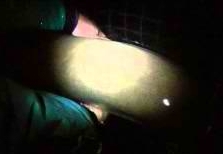
Posts: 1938
Location: Black Creek, WI | I'll try keep my thoughts simple... and mostly in response to MRobert's comments.
I feel that at an equal fish/acre... or even at equal 50" fish/acre densities.... the larger lakes offer a better opportunity to catch bigger fish.
I feel bigger lakes favor the "revolving door" concept on popular structures. Even at equal fish densities... we must recognize that the fish are equally distributed throughout the lake. Good musky structures are good because they concentrate fish. More big fish using the same piece of structure increases the probability of contacting them... but also distributes/diffuses the PRESSURE factor. Even if pressure has no impact on fish growth rates, growth potential, or mortality rates... it certainly impacts their behavior.
Let's just say we have a 400 acre lake with a very obvious piece of structure such as a point.... and a 40,000 acre lake with a similar piece of structure that most musky anglers can identify and add to their milk run. If each structure gets fished 10 times a day on both lakes... the structures receive the same amount of "pressure" but the larger lake has the potential for MORE fish using the same piece of structure. Thus the "pressure per fish" is much much greater on the smaller 400 acre lake. I don't believe fish get conditioned... but they certainly are affected by pressure. A fish that might position itself on a structure for 4 hours if not disturbed may only get to stay there for 1 hour before it must FLEE due to the structure being disturbed by an angler. On a smaller lake with the same density of fish... the odds of another big fish moving into that same piece of structure is much less. Thus, the next guy to fish the spot on the 400 acre lake is much less likely to contact a big fish. On a bigger a lake... with more total numbers of big fish available... the odds increase that another big fish will move in. See where I'm going with this???
So I guess I feel that bigger lakes handle pressure better... offering a better opportunity. The smaller the lake... the more emphasis I put on the lake receiving less pressure to increase MY opportunity.... under the ASSUMPTION that all lakes have equal fish densities (we know that isn't really true) and growth potential (this one is highly debated today with the "genetic" info) and perhaps equal life expectancies (size limits?).
I feel that those trying to understand the genetic impact on growth... and the management practices with stocking and size limits is a noble cause.... but that is a long term solution to catching bigger fish. If you want to catch bigger fish TODAY... consider your existing opportunites. No doubt you can catch big fish from BOTH big and small lakes... you just gotta approach them a little differently while we try to figure out if genetics, size limits, or whatever can be better managed to increase FUTURE opportunity.
jlong | |
| | |
| Slamr says - What is a 'small lake' in MN? 3,000 acres?
My reponse - Not to me.
Slamr says - A small muskie lake in WI is 250 acres?
My response - Yes, I would consider this a small lake in either WI or MN.
Slamr says - And you think that this little lake should put out the same number of trophies as a small MN lake?
My response - No, I would not expect a 250 acre lake in WI to put out as many trophies as a 3,000 acre lake in MN. Would you? However I would expect that a lake in WI if managed properly and to its full potential and if the fish we are stocking into it are indeed just as capable of growing to the same sizes as the MS fish are in MN, then yes I would expect it to put out the same number of trophies as a lake of equal size in MN. Unfortunately this is not the case at all. Is this an unrealistic expectation? I don't think so.
Slamr says - Have you EVER considered, even CONSIDERED that maybe you're comparing apples to oranges?
My reponse - NO, because I am not comparing apples to oranges. Please show me just one time where I or the WMRP has even once compared a large lake in MN to a small lake in WI as I am unaware of ever doing so. The WMRP compares lakes of equal size. AKA, apples to apples! We have also compared single lakes in MN to the entire state of WI to further show the difference between MN and WI. I will provide a sample of this for you here. Lets look at what happens when you look at actuall catch data of reported muskies from one single 5,800 acre lake in MN compared to the entire state of MN using the largest source of catch data available anywhere on the planet, which by the way is the exact same source the WDNR has obtained and used data from for thier own reports. Here goes....In just 2004 alone, there were 18 50 inch fish reported from a single lake of 5,800 acres in MN compared to a total of 15 50 inch fish reported from the ENTIRE STATE OF WI IN 2004! This is pretty eye opening to me to say the least and really pisses me off that this could even happen. Want to see more? Want to see comparisons of lakes of equal size? I can post the data here for all to see if you like but it all shows the same results. MN lakes pump out numbers of large fish while WI lakes of equal size do not.
Slamr says - how many MI members are there?
My response - I don't know for sure. Do you? The last numbers I have heard was around 10,000 members.
Slamr says - How many muskie fisherman are there in Wisconsin?
My reponse - I don't know, do you? How many are in MN? I dont know, do you?
Slamr says - How many MI members fish in Wisconsin?
My response - I don't know, do you? How many fish in MN? I dont know, do you?
Slamr says - My point here is that though Muskies Inc. is a great organization, and has done great things for muskies overall, the 'lunge log can NOT BE USED FOR DATA!
My response - Apparently both the WDNR and I disagree with you Slamr. Please check out the 2003 WDNR Muskie Management update as well as several other reports written and printed by the WDNR to see if MI lunge log data is being used anywhere in them and tell me what you find.
As a side note,...I have emailed the appropriate person to get the actuall numbers of the total number of muskies reported from both MN and WI in 2004 but still waiting for a response. Since I already know for sure that there are more than twice as many MI members in WI than in MN, (although I do not have the actuall numbers but will request them) this information should help us to better understand the importance of the fact that there were 163 50 inch muskies reported from MN in 2004 compared to only 15 from WI in 2004 and the importance of the fact that there were more 50 inch fish reported from a single 5,800 acre lake in MN in 2004 compared to the entire state of WI in 2004. My guess is that there will be at least twice as many total fish reported from WI in 2004 than in MN in 2004. Why? Most likely because there are that many more members in WI than in MN but I'm sure other factors apply. If I am correct that there will be at least twice as many fish reported from WI than MN in 2004, and only 15 of those from WI were at least 50 inches compared to 163 of those from MN that were 50 inches, this would even further convince me that there is a far greater chance of catching a 50 inch fish in MN than in WI and also from lakes of equal size.
How many 50 inch fish caught in WI do you honestly believe could have gone unreported by MI members in 2004? 20, 50, 100, or maybe a 148, which is what you would need to get WI equal to the 163 50 inch fish reported from MN in 2004? I don't really think it matters much when you have 148 more 50 inch reported from MN than from WI in a single year and when there are twice as many MI members in WI than in MN. How many 50 inch fish went unreported in MN in 2004? 20, 50, 100, 500? Again, does it really matter with a difference of 148 between the two states in 2004 alone? I doubt that if it were even possible to count every single 50 inch fish from both states caught in 2004 by all anglers that the difference between the two would narrow any,....in fact I would bet the difference would be even greater. | |
| | |

Posts: 199
Location: Anchorage | This thread was posted to point out that Minnesota and Wisconsin are two different states, and that is one topic I think we can all agree on. Am I right? They obviously share similar characteristics, but still, how can we compare them and say Wisconsin should be just like Minnesota. It can't happen. There are to many differences, be it geological, biological, or genetic. Wisconsin's muskie fishery could be improved, something else we all agree on. But why must we continue to compare "our" fish against Minnesotas? Two differen situations require two different plans and will have two different results. I think this has been said before, but it warrants being said again.
This goes for any size lake.
Might we have a bit of "MUSKIE ENVY" on our hands? 
Edited by woody 5/5/2005 9:15 AM
| |
| | |

Posts: 32935
Location: Rhinelander, Wisconsin | The Vilas County Muskie Marathon reported 2 more 50" fish last year than the ENTIRE Muskies Inc Lunge log for the state. I know of a dozen or so more that were not reported, at least. When you get the data, please break it down water to water, lake to lake, so we can see which Minnesota lakes are dominating the reported big fish MI list. | |
| | |

Posts: 32935
Location: Rhinelander, Wisconsin | Mike, I agree, one doesn't need a huge lake to grow a big fish. Jlong said it well regarding the opportunity factors a large lake offers, and I'd like to take that a step further with the idea that a big lake will also distribute pressure and allow for more fish to get to the larger size as a result of less harvest and reduced angler related release mortality. Also, everything else equal, forage has equal opportunity to use the acreage/cover to reproduce and avoid predation, plus larger bodies of water can offer more diverse forage types if the big lake is also either a flowage or is two story or very fertile, or...you get the picture.
I think the most important thing to focus on with big/little lake and big fish is the numbers of fish per acre and the impact of heavy pressure on both. Since a 500 acre lake ANYWHERE will have only a very few muskies that are what we consider trophy class, if just a few are harvested, the impact is large. A larger lake with a strong population probably will withstand pressure better, and will everything else equal, not be as heavily impacted by incedental harvest or mortality of a few large fish. Compare the Wisconsin River to the Moen Chain, for example. If 4 50" fish are removed from the Moen, the impact would be much more on future trophy contact potential than on the Wisconsin, only because of surface area. If there are several year classes coming along on Moen, and they are near that 50" mark, then the impact will lessen. What if, however, there isn't, because there were 3 48" fish harvested every year for 5 years before that on Moen? That is a slippery slope that has to be considered, and IMHO is what happened to big fish in that water. But what about some of the small lakes that DON'T put out the big girls that George has, for example? These are the same fish stocked in those waters. Most of the lakes I am referring to were stocked, some of them many times, since 1972, so why are the muskies 'small' in some lakes, and 'large' in others?
Mike, you have made the exact case I was trying to make, but I was looking at it from the stance our Wisconsin fish have good genetics for trophy potential, and you the big lake/little lake thing. Many of those little lakes were stocked, with a few exceptions, to create muskie fishing opportunity. Lake George was stocked heavily, and you know how well some of the fish have done there. Conversley, the Moen has NOT been heavily stocked, and the big girls have thinned out. Pelican was stocked every year for a number of years and has actually improved IMHO for big fish opportunity, despite MUCH higher muskie angling hours than what was there when I first started guiding in 1974. More pressure and equal opportunity for a big fish as on some of the better small waters despite harvest and spearing means something, it HAS to.
Steve's example notes some big fish from small waters in Minnesota, including some hybrids. You and I note large fish from small waters here (my avatar photo fish was near 40#, for sure), and in the case of Kentuck and some other waters, big hybrids. Mr. Simonson's letter relates surface area here to surface area MN, waters available, and makes what I still feel is a very accurate statement about the two. Then Wisconsin pressure/spearing/etc enters the equasion. Another point well taken is the degrardation of spawning areas in many Wisconsin waters because of development. | |
| | |
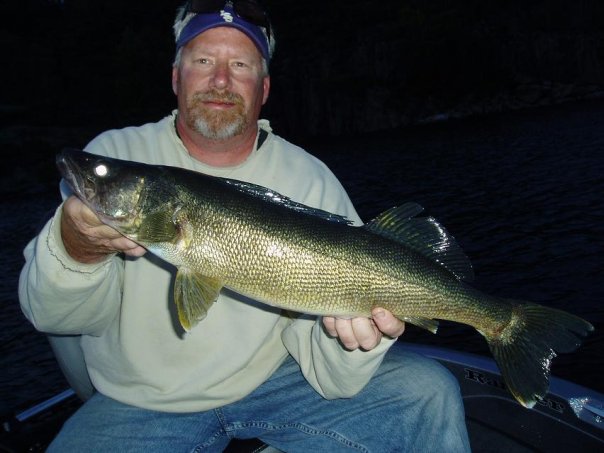
Posts: 13688
Location: minocqua, wi. | Minnesota = Apple, Wisconsin = Orange, if this isn't true ..... ask anyone from Wisconsin what a Mich. Golden Light is? they'll give you a goofy look wondering what the heck you are talking about. this thread needed some humor and hope this helps.
| |
| | |
Posts: 1270
| Maybe Wisconsin fish are just smarter than Minnesota Fish and aren't as easy to catch  We already know that Packer fans are smarter than Vicking fans! We already know that Packer fans are smarter than Vicking fans! | |
| | |
| Viking fans can spell though. | |
| |
|
 Has Anyone Considered This?
Has Anyone Considered This? Has Anyone Considered This?
Has Anyone Considered This?